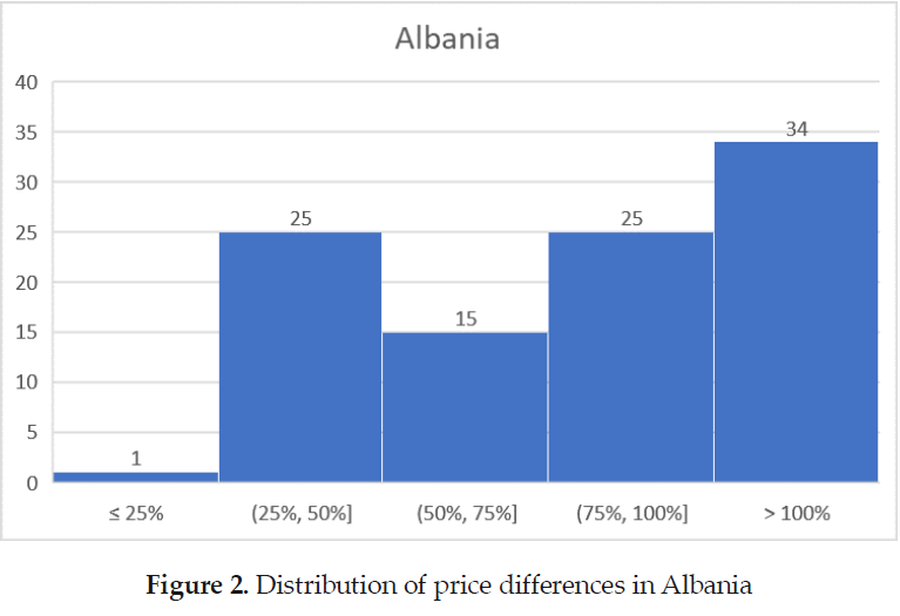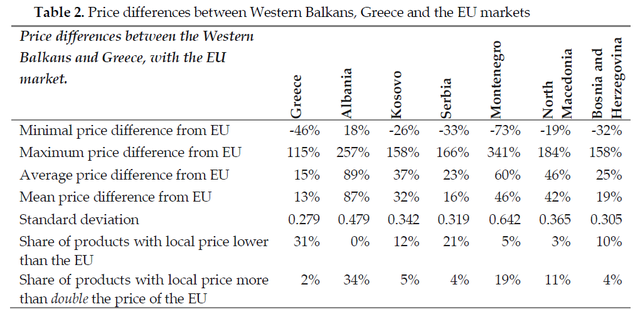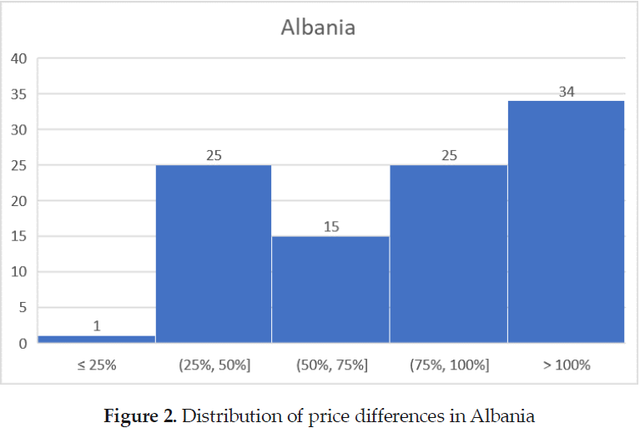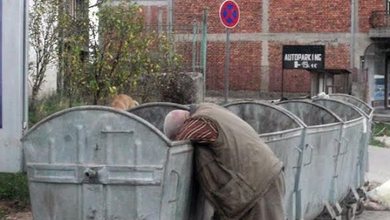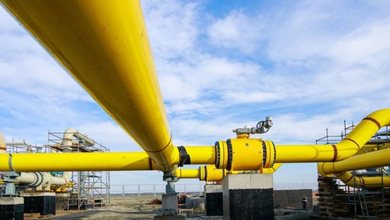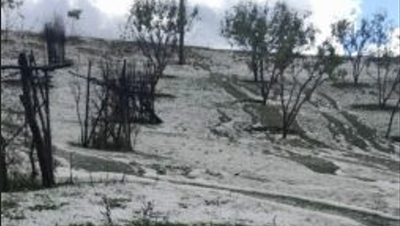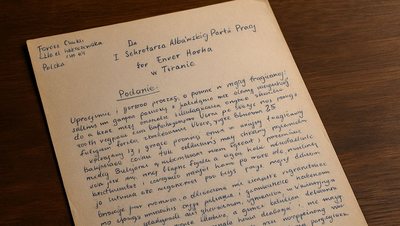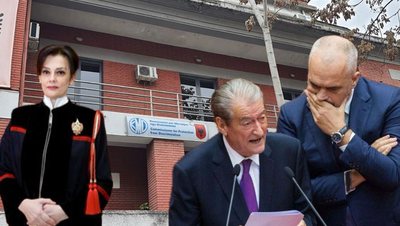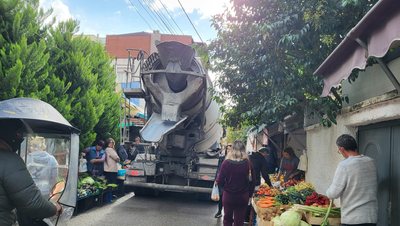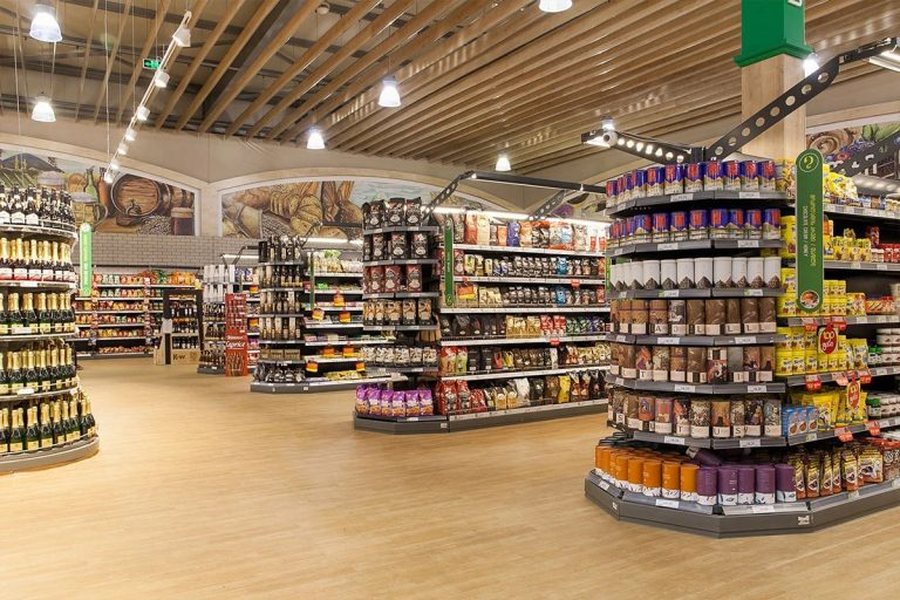
Prices in Albania are on average 89% higher for the same products compared to the European Union. This is one of the main conclusions of an in-depth study undertaken by economist Ilir Ciko. In the study, he proposes the Market Competition Index (MCI) as a new method to measure the real level of competition in the Western Balkan countries, by comparing the real prices of identical products sold by the same European companies in the EU markets and in the region.
The model argues that the main cause of high prices is not local costs, but the lack of real competition in these markets. These practices not only harm consumers and increase social inequalities, but also hinder the long-term growth of businesses, reduce investment in innovation and encourage emigration due to high living costs.
The "Five Forces" analysis shows that the Western Balkan markets are characterized by low bargaining power of consumers, low threat of new entrants, and weak competition among existing players, which gives multinational companies a dominant position and opportunities for price abuse.
For the price analysis, an international European company with an extensive network in all Western Balkan countries, known for its quality products and global presence, was selected.
Between 3–12 April 2025, online data was collected from the company’s official websites for 100 consumer products selected from 10 broad product categories, sold in Albania, Kosovo, North Macedonia, Serbia, Montenegro, Bosnia and Herzegovina, Greece and the company’s country of origin, including a total of 800 price records. All prices were converted into euros according to the daily exchange rates of the European Central Bank.
The products were selected based on clear comparability criteria, such as: identical in code and specifications, sold in all countries, not being luxury, seasonal or promotional items, and not being subject to special taxes (such as excise duty).
After collection, prices were adjusted for VAT changes to enable fair comparison. The deviation of each country’s prices from the baseline level of the company’s country of origin was then calculated, which allowed a direct assessment of price differences and competitive behavior in the Western Balkans and Greek markets relative to the EU market.
After adjusting for changes in VAT, prices in the region are on average 47% higher, ranging from lower levels to more than three times the prices in the company's home country in the EU.
In Albania, prices were the highest, with an average of 89% more than in the EU core market, followed by Montenegro with 60% and North Macedonia with 46%. Kosovo recorded an average increase of 37%, while Bosnia and Herzegovina (25%) and Serbia (23%) showed smaller differences.
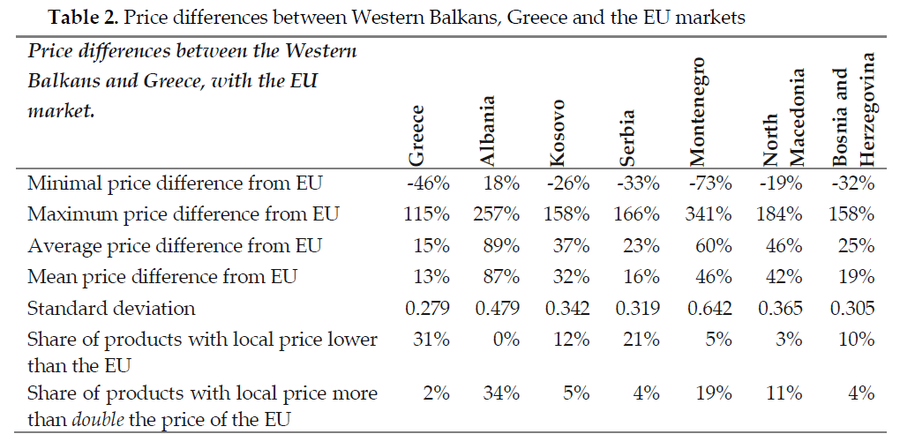
Analysis of price data for Albania shows that, after normalizing for changes in VAT, product prices in Albania are on average 89 percent higher than those of the same products sold by the same company in its country of origin, with an average difference of 87 percent and a standard deviation of 0.48. No product is sold in Albania at a lower price than in the company's home country. About 34 percent of products are sold in Albania at more than double the price of the same products in the home country. The minimum price difference in Albania is 18 percent higher, while there are items that are up to 257 percent more expensive./ekofin.al
